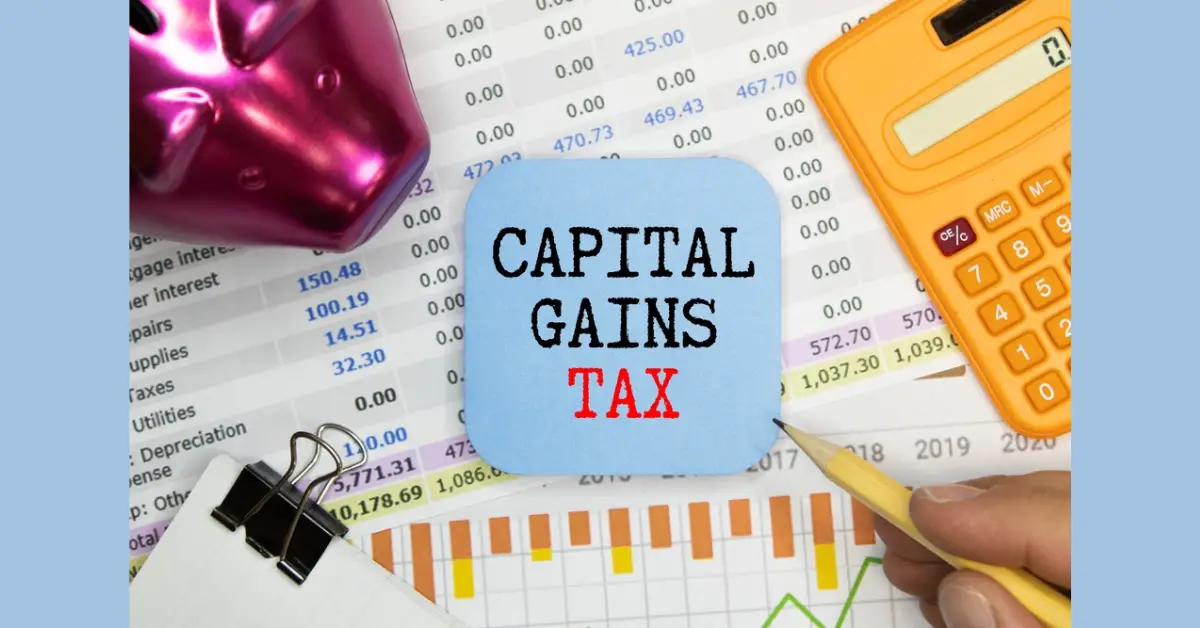How to Calculate Capital Gains Tax in the US ! Navigating the world of capital gains tax might feel like deciphering a complex puzzle, but it doesn’t have to be overwhelming. Understanding how to calculate your capital gains tax is crucial for managing your investments and ensuring you’re not caught off guard when tax season arrives. Let’s break it down step by step, so you can approach it with confidence and clarity.
How to Calculate Capital Gains Tax in the US

Understanding Capital Gains
What are Capital Gains?
Capital gains are the profits you make from selling an asset, such as stocks, real estate, or other investments, for more than you paid for it. Imagine you bought a stock at $50 per share and sold it at $70 per share. The $20 difference is your capital gain. Simple enough, right? But the tax implications can get a bit more complicated.
Types of Capital Gains
Capital gains come in two main flavors: short-term and long-term. Knowing the difference is key to understanding how much tax you’ll owe.
Short-Term vs Long-Term
Short-term capital gains arise from selling assets you’ve held for one year or less. These gains are taxed at your ordinary income tax rate, which can be as high as 37% depending on your income bracket. On the flip side, long-term capital gains come from assets held for more than a year. These are usually taxed at a lower rate—0%, 15%, or 20%, depending on your income level. Think of short-term as a sprint where you’re racing to the finish, and long-term as a marathon with a more leisurely pace. The tax rates reflect this difference in holding time.
Also Read – Best Accounting Software for Small Businesses in the US
How Capital Gains Tax is Calculated
Basic Calculation Formula
To calculate capital gains tax, you first need to determine your capital gain. The basic formula is:
Capital Gain=Selling Price−Purchase Price\text{Capital Gain} = \text{Selling Price} – \text{Purchase Price}Capital Gain=Selling Price−Purchase Price
For example, if you bought a piece of art for $1,000 and sold it for $2,000, your capital gain is $1,000. Once you have your gain, you need to apply the appropriate tax rate based on whether it’s a short-term or long-term gain.
Factors Affecting Your Capital Gains Tax Rate
Several factors can influence how much you’ll pay in capital gains tax:
Income Level
Your overall income can affect your capital gains tax rate. The higher your income, the higher your tax bracket might be. For long-term capital gains, this means you could be taxed at 0%, 15%, or 20%, depending on your income level. If you’re in a higher income bracket, you could face the maximum rate.
Holding Period
As mentioned earlier, the length of time you hold an asset before selling it plays a crucial role. Short-term gains are taxed at your ordinary income rate, which can be higher, while long-term gains benefit from reduced tax rates.
Steps to Calculate Your Capital Gains Tax

Step 1: Determine Your Basis
The basis is the amount you originally paid for the asset, including any costs associated with the purchase. For example, if you bought 100 shares of a stock at $50 each, your total basis would be $5,000. If you paid a $10 commission fee when buying the stock, your basis would increase to $5,010.
Step 2: Calculate Your Gain
Subtract your basis from the selling price to determine your gain. For instance, if you sold the 100 shares at $70 each, the selling price would be $7,000. Subtracting your basis of $5,010, your capital gain is $1,990.
Step 3: Apply the Correct Tax Rate
Federal Tax Rates
The tax rate you apply depends on whether your gain is short-term or long-term. For short-term gains, use your ordinary income tax rate. For long-term gains, the rates are more favorable. As of the latest tax brackets, these rates are 0%, 15%, or 20%, depending on your income level. For example, if your total taxable income falls within the 15% long-term capital gains bracket, that’s the rate you’ll pay on your gains.
State Tax Rates
Don’t forget that state taxes can also apply to your capital gains. State tax rates vary widely, with some states taxing capital gains at the same rate as ordinary income and others offering different rates. It’s essential to be aware of your state’s tax laws to avoid any surprises.
Also Read – Tips for Saving on Taxes as a Freelancer in the US
Tax Reporting and Documentation
Required Forms and Documents
When it comes time to file your taxes, you’ll need to report your capital gains using specific forms. The IRS Form 1040 and Schedule D are the primary forms used to report capital gains and losses. Be sure to keep detailed records of all transactions, including purchase and sale dates, amounts, and any associated fees. Good record-keeping can simplify the reporting process and ensure accuracy.
Common Mistakes to Avoid
One common mistake is failing to accurately track your basis. If you don’t record the correct amount you paid for an asset, it can lead to incorrect calculations of your gains and, consequently, your tax liability. Another pitfall is not considering state taxes, which can affect your overall tax bill. Double-check your calculations and documentation to avoid these issues and ensure you’re paying the correct amount.
Capital Gains Tax Strategies
Tax Loss Harvesting
Tax loss harvesting is a strategy where you sell investments at a loss to offset your capital gains. This can reduce your taxable income and potentially lower your tax liability. For example, if you have $5,000 in capital gains and $2,000 in capital losses, you can subtract the losses from your gains, reducing the amount subject to tax.
Use of Tax-Advantaged Accounts
Holding investments in tax-advantaged accounts like IRAs or 401(k)s can offer tax benefits that help manage your capital gains. These accounts often provide tax-deferred or tax-free growth, which can be beneficial for reducing your overall tax liability.
Conclusion
Calculating capital gains tax might seem like a daunting task, but breaking it down into manageable steps makes it more approachable. By understanding the types of capital gains, how to calculate them, and the factors that influence your tax rate, you can handle tax season with greater confidence. Remember to keep detailed records and consider strategies to minimize your tax liability. With the right approach, you can effectively manage your investments and stay on top of your tax obligations.
FAQs
What is the difference between short-term and long-term capital gains?
Short-term capital gains come from assets held for one year or less and are taxed at ordinary income rates. Long-term capital gains, from assets held for more than a year, benefit from lower tax rates, typically ranging from 0% to 20%.
How can I reduce my capital gains tax liability?
You can reduce your liability through strategies such as tax loss harvesting—selling investments at a loss to offset gains—and utilizing tax-advantaged accounts like IRAs or 401(k)s. Keeping detailed records of all your transactions is also crucial for accurate reporting and potential deductions.
What forms do I need to file for capital gains tax?
For capital gains, you’ll generally need to file IRS Form 1040 and Schedule D. These forms help you report your gains and losses. Be sure to keep thorough records of your transactions to support your filings.
Are there any deductions available for capital gains?
While there are no specific deductions for capital gains, strategies like tax loss harvesting can help offset your gains. It’s also important to track all costs associated with your investments to accurately calculate your gains and losses.
How does capital gains tax affect my overall tax return?
Capital gains tax impacts your overall tax return by increasing your taxable income. This can affect your tax bracket and the total amount of tax you owe. Understanding your gains and applying the correct tax rates helps ensure you’re prepared for your tax bill.

